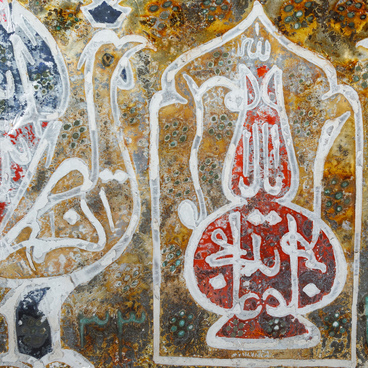The Nativity of Christ — the birth of God in the flesh — is one of the main Christian feasts commemorating the events of the earthly life of Jesus Christ. It is the beginning of a new chronology of history in our era, and Christians have been celebrating this event for more than 2000 years. The iconography of the Nativity developed over several centuries. The first narrative images dedicated to the birth of the Baby Jesus date back to the 3rd and 4th centuries and were found in Roman catacombs. They are simple, concise and include only the key scenes: the Virgin Mary with the Child and the Adoration of the Magi.
The painting “Holy Nativity” from the collection of the Dagestan Museum of the History of World Cultures and Religions is a copy of a manuscript by the 14th-century painter Sarkis Pitsak. Pitsak was a prominent representative of medieval Cilician tradition of miniature painting, he copied and illustrated manuscripts at the behest of King Leo IV of Armenia. Sarkis Pitsak was a recognized master who produced about 50 completed works, but the creator of the reproduction of one of them, “Holy Nativity”, is unknown.
The composition of the miniature is dense and intense. In the center is the Mother of God with the child, she lies on the ground in front of the entrance to the cave. The bright red color of her bed repeats the outlines of the silhouette. The color scheme is interpreted quite broadly, with red representing the Resurrection, royal authority, redemption of sins and maternal love. An integral part of the Nativity iconography is the Magi. The scene of their worship symbolizes the conversion to Christ of pagan peoples from distant lands, their desire to embrace the new unified faith. The “Holy Nativity” depicts three wise men, they embody the three stages of human life: youth, maturity and old age. This marks the idea that man needs God’s help at any period of his life.
Inside the cave is the manger with the newborn Jesus. He is always wrapped in white, as it is the color of purity, innocence, divine truth, goodness and light. Next to the infant Christ are the shepherds — they were the first to whom the angels appeared and announced the birth of the King of the Jews. The ox and the donkey are the symbols of Jewish and pagan nations to whom Jesus brought spiritual liberation. The animals warm the child who is destined to grow up and lead them.
The painting “Holy Nativity” from the collection of the Dagestan Museum of the History of World Cultures and Religions is a copy of a manuscript by the 14th-century painter Sarkis Pitsak. Pitsak was a prominent representative of medieval Cilician tradition of miniature painting, he copied and illustrated manuscripts at the behest of King Leo IV of Armenia. Sarkis Pitsak was a recognized master who produced about 50 completed works, but the creator of the reproduction of one of them, “Holy Nativity”, is unknown.
The composition of the miniature is dense and intense. In the center is the Mother of God with the child, she lies on the ground in front of the entrance to the cave. The bright red color of her bed repeats the outlines of the silhouette. The color scheme is interpreted quite broadly, with red representing the Resurrection, royal authority, redemption of sins and maternal love. An integral part of the Nativity iconography is the Magi. The scene of their worship symbolizes the conversion to Christ of pagan peoples from distant lands, their desire to embrace the new unified faith. The “Holy Nativity” depicts three wise men, they embody the three stages of human life: youth, maturity and old age. This marks the idea that man needs God’s help at any period of his life.
Inside the cave is the manger with the newborn Jesus. He is always wrapped in white, as it is the color of purity, innocence, divine truth, goodness and light. Next to the infant Christ are the shepherds — they were the first to whom the angels appeared and announced the birth of the King of the Jews. The ox and the donkey are the symbols of Jewish and pagan nations to whom Jesus brought spiritual liberation. The animals warm the child who is destined to grow up and lead them.



